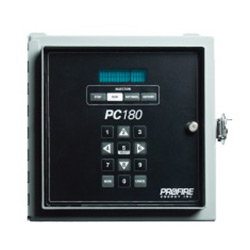Creative Designs of Roller Coasters for Amusement Park Enthusiasts and Artists
The Thrill of Roller Coaster Design
Roller coasters have long captivated the imaginations of thrill-seekers and design enthusiasts alike. The intricate dance of engineering, artistry, and physics involved in roller coaster design is akin to painting a masterpiece on a canvas of steel and wood. Every twist, turn, and drop is meticulously planned, creating an experience that is not only exhilarating but also visually stunning.
From the moment a coaster concept is born, designers embark on a journey that requires a blend of creativity, mathematics, and an understanding of human psychology. The initial sketches often start as rough drawings, capturing the essence of what the ride will be. These drawings evolve into sophisticated blueprints, integrating safety features, ride dynamics, and aesthetic elements that will ultimately attract riders.
The Thrill of Roller Coaster Design
Safety is, of course, the top priority in roller coaster design. Engineers must adhere to strict safety regulations and conduct extensive testing to ensure that every component of the ride can withstand the stresses of operation. This rigorous process often involves simulation software that models the ride’s dynamics and physical properties before any construction takes place. Once built, coasters undergo countless test runs, often with sandbags or dummies, to gauge how they will perform with actual riders.
roller coasters drawing

Aesthetic considerations also play a vital role in the design process. Roller coasters are often part of a larger amusement park experience, and their visual appeal can significantly impact foot traffic. Designers think about the color schemes, theming, and overall integration into the park's landscape. A stunning coaster can become an iconic landmark, drawing visitors from far and wide. The soaring height of a coaster against the backdrop of a sunset or its intricate patterns catching the eye of park-goers creates a visual allure that is hard to resist.
Additionally, the emotional experience of riding a roller coaster is an important factor in design. The anticipation built during the ascent, the thrill of the drop, and the exhilaration of high-speed turns combine to create a cocktail of emotions. Designers often use tricks like sudden drops or unexpected inversions to heighten the sense of surprise and excitement. The pacing of these elements is critical; a smoothly flowing ride keeps riders engaged and wanting to experience it again and again.
Moreover, as technology advances, the possibilities for roller coaster design expand significantly. Innovations such as virtual reality integration, synchronous music, and enhanced restraint systems allow designers to create immersive experiences that are more captivating than ever. Modern coasters can take riders on journeys through fantastical landscapes or story-driven experiences, adding layers of interaction that were previously unimaginable.
In conclusion, the magic of roller coaster design lies in its unique blend of creativity, engineering, and user experience. Designers are not just creating a ride; they are crafting unforgettable memories for millions of people. Each roller coaster tells a story, filled with thrills and excitement, inviting riders to conquer their fears and embrace the exhilarating journey ahead. As technology progresses and artistic boundaries are pushed, the future of roller coaster design promises to be more thrilling than ever.
-
Top Amusement Equipment Manufacturer Rock n Roller Coaster & Carousel ManufacturerJun.10,2025
-
World's Scariest Roller Coaster Experience Ultimate Thrill & HeightJun.10,2025
-
Ultimate Thrill Ride Roller Coaster High-Speed, Safe AdventureMay.30,2025
-
Carousel Mansfield Rides Premium Indoor & Event SolutionsMay.30,2025
-
T3 Roller Coaster High-Thrill, Safe Ride for Theme Parks & ResortsMay.30,2025
-
Roller Coaster Cart Design Custom-Built & High-Safety Thrill Ride VehiclesMay.30,2025
